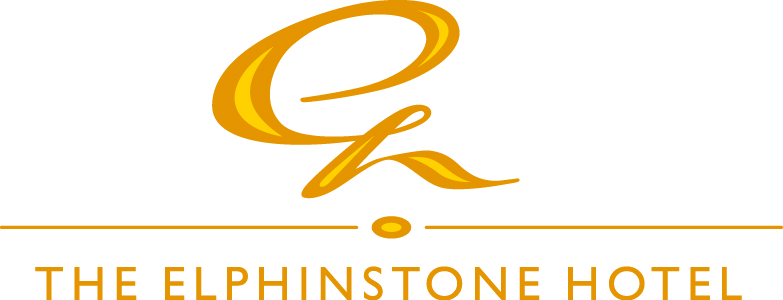"ALBION OF SCOTSTOUN" - LIST OF CHAPTERS AND NOTES
|
Chapter 1: |
THE EARLY YEARS, 1899-1919 The founders; Murray, Fulton, and later, Henderson - how the Albion Motor Car Company started at Finnieston in 1899 - it's move to Scotstoun four years later - the growing reputation for reliability - production taken over for World War 1 output. Models covered and illustrated: A1 and A2 (dogcarts), A3, A6, A10, A12, A14, A16, WD type A10. |
|
Chapter 2: |
LOWS AND HIGHS, 1920-1929 Reconditioning of ex-WD A10's - progress with new models - first overtype - first six-wheeler - death of Dr.Blackwood Murray. Models covered and illustrated: A20, A10 MkII and III, Model 24 (all passenger and commercial types), Models 26, 27, 28, 31, 32, 34, 35, 40, 41. |
|
Chapter 3: |
EXPANSION AND COMPETITION, 1930-1936 Belated developments with diesels - Beardmore and other proprietary diesels - name change to Albion Motors Limited - experimental trolleybus - purchase of Halley factory - first eight-wheeler - George Pate in charge. Models covered and illustrated: Bus models 65, 67, 69, 141, 145, 70, 71, 80, 81, 85; Goods models 43, 44, 46, 47, 463, 473, 50, 51, 52, 53, 520, 530, 126, 127, 118, 119, 12, 123, 125, 129, 36, 37, 56, 57, 58, 59, 54, 55, 540, 550, 547, 557, 549, 559, 553, 561, 563, 131, 133, 136, 137, AM463. |
|
Chapter 4: |
THE WAR INTERVENES - NEW TRUCK MODELS, 1937-1950 New model designations for new model range - South African orders - WW2 military output - removal of proprietary engines - the EN286 engine - model names - emphasis on overseas markets. Models covered and illustrated: BY1, BY3, BY5, EV1, FT11, FT15, CX6, CX22, CX23, CX24, CX33, AZ1, AZ3, AZ5, AZ7, AZ8, FT3, FT3A, FT3A6W, FT5, FT7, FT21, FT23, FT35, FT37, FT38, FT101, FT102, CX1, CX2, CX3, CX4, CX5, CX21, CX23, CX27, CX29, DW1, DW3. |
|
Chapter 5: |
MISSING THE BUS - THE DECLINE OF THE BUS MARKET, 1937-1950 The extensive bus range - the delay in developing a suitable diesel - the loss of customers due to the war - new management - the axing of the heavy bus range. Models covered and illustrated: CX9, CX11, CX13, CX14, CX19, CX20, Cx25, CX37, CX39, CX41, FT3AB, FT39. |
|
Chapter 6: |
THE KP EXPERIMENTS The company's most expensive experimental development programme - a range of horizontally opposed engines based on the EN286 - collaboration with Saurer - air cooled version - how the KP engines worked. Models covered and illustrated: All KP engined models. |
|
Chapter 7: |
THE LEYLAND TAKEOVER AND IT'S AFTERMATH, 1951-1957 The demise of the AZ series - still too many models - merger with Leyland - rationalisation and specialisation on lighter models - the development of the 15.2 litre EN900 engine - Britain's biggest engined bus - the increasing dominance of Leyland - the resignation of Hugh Fulton, son of the co-founder. Models covered and illustrated: HD53, HD55, HD57, HD73, HD75, HD61, HD63, HD23, FT37A, FT39A, FT25, FT27, FT107, FT111, MR5, MR7, MLH3, MR9, MR11, WD66, PF107, PF108, 24C/1, 24/C3, FT39K, HD175. |
|
Chapter 8: |
THE RISE AND FALL OF THE LEYLAND-ALBIONS, 1958-1972 The LAD cab - the double reduction axle - new bus models - Leyland men in charge - expansion at Scotstoun - decline under British-Leyland. Models covered and illustrated: CH3, CD21, CD23, VT15, VT17, VT23, VT19, CL3, CL5, NS3, RE25, RE27, CH7TR, 24C/5, CH3A, CL3A, CL5A, NS3A, LR1, LR3, LR7, RE29, CH13, CH17, VT21, VK41, VK55, CD65, RE33, VK43, VK45, VL3, CH71, CH51, CA81, RE129, RE229, CD40/41, RE40/41, 2CD4016, 2RE4124. Please note the following correction to the second RE25 caption on page 122 of the book: The twin propshafts rotated in the same anti-clockwise direction, not in opposite directions as stated in the text. |
|
Chapter 9: |
BACK IN THE DRIVING SEAT - COMPLETING THE CENTURY The loss of chassis and gearbox production - concentration on axle manufacture - takeover by DAF - receivership - management buy-in - Albion Automotive - expansion and diversification through acquisitions - takeover by American Axle and Manufacturing. Models covered and illustrated: Some complete DAF, Leyland and LDV vehicles featuring Albion components. |
|
Chapter 10: |
TRAINS AND BOATS AND CRANES - UNUSUAL APPLICATIONS AND INCIDENTS Albion engines and components in other plant - unusual models - mishaps. Models covered and illustrated: some typical examples. |
|
Appendix A: |
The Albion-Murray Patents The inventions which gave Albion the advantage over it's early competitors. Models covered and illustrated: The Albion-Murray Mechanical Lubricator - Albion-Murray low tension Magneto - Albion-Murray Speed Governor. |
|
Appendix B: |
Model and Chassis Numbering Systems Model and chassis numbering systems, all types explained. |
|
Appendix C: |
Model List, 1899-1972 Table of 260 model types from 1899 to 1972; chassis numbers - dates of production - engines - engine layout - final drive - detailed notes. |
|
Appendix D: |
Engine List, 1899-1972 Table of 85 engine types from 1899-1972 - fuel type - number of cylinders - format - bore & stroke - swept volume - models fitted - notes. Please note the following corrections to the Engine List information printed in Appendix D of the book: |
|
Appendix E: |
Chassis Output, Staff and Workforce Graphs Two graphs; staff numbers - chassis output |
|
Bibliography |
|
|
Acknowledgements |
|


